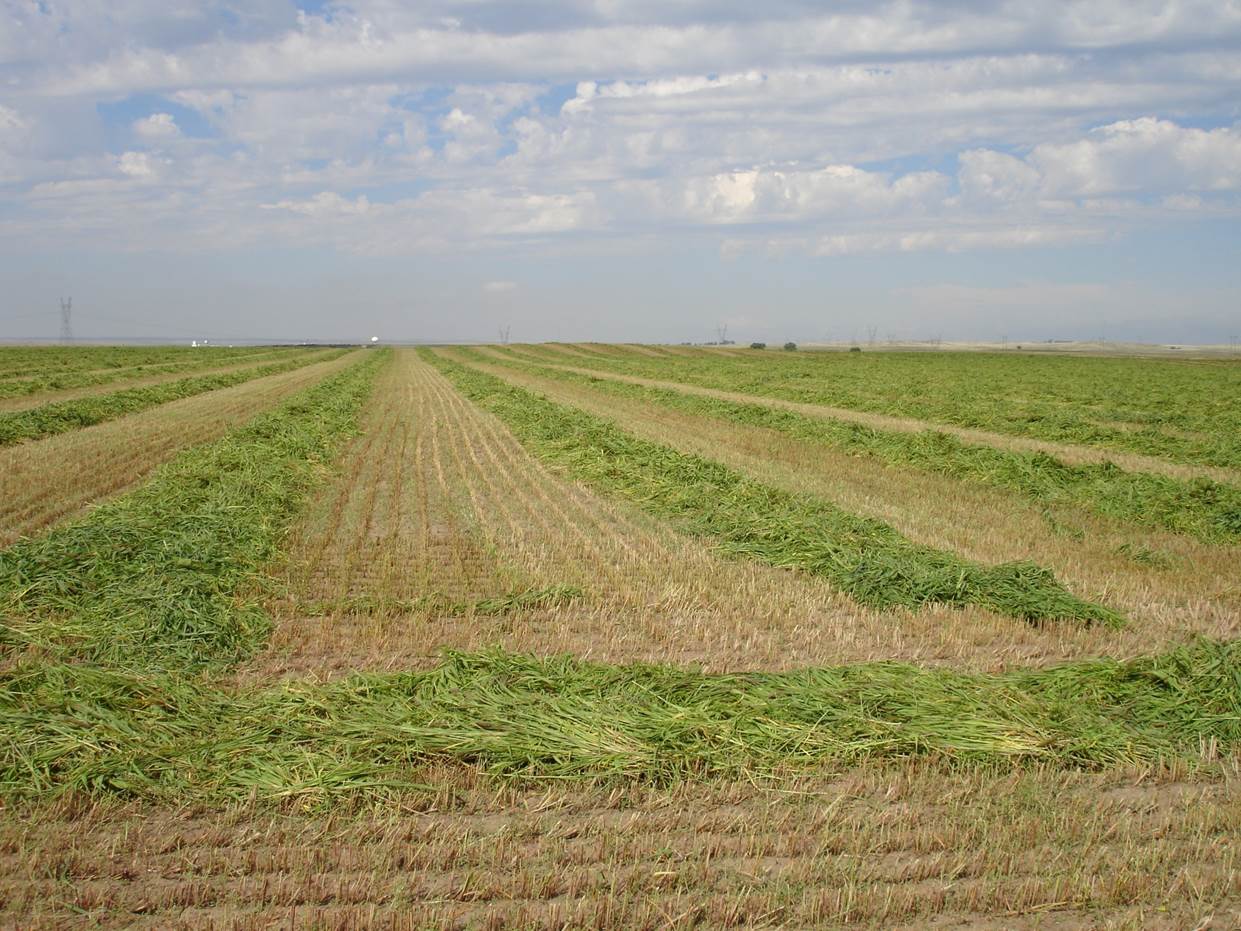
By Bruce Anderson, UNL Forage Specialist
SUMMER HEAT AND FORAGE GROWTH
Summer heat hit us hard the past couple weeks. How do these high temperatures affect different types of forage plants?
When it suddenly turns ‘hooey boy’ hot – you know, 90 plus degrees and humidity so thick you can almost see it – cool-season plants suffer along with you and me. Alfalfa and clovers, bromegrass, orchardgrass, fescues, needlegrasses, and wheatgrasses all struggle during hot weather.
Do you remember – before air conditioning – how drained you used to feel after spending a night when the temperature never dropped below 80? The same thing happens to cool-season forages, resulting in very slow growth, lower forage quality as plants burn up the good nutrients, and limited recovery of root reserves after defoliation. And if it also is dry these conditions can even become deadly.
Warm-season grasses are just the opposite. Millet, sudangrass, sorghums, and our native bluestems, gramas, switchgrass, and other warm-season grasses thrive when the temperature is around 90 degrees. Their metabolism runs at peak efficiency when it is hot so they grow rapidly while maintaining reasonable forage quality and good root growth.
Of course, this assumes these plants have adequate moisture. Once they dry up, these grasses will overheat too, just like cool-season grasses do at lower temperatures.
As you graze or hay, be aware of the stress weather is putting on your forage. When it’s too hot, allow plants to recover for a longer time before next use. And don’t expect high feed values or good animal gains when the goodies are burned right out of the plants.
Proper expectations and management adjustments can limit the stress from stressful weather.
HARVESTING SUMMER ANNUAL GRASSES FOR HAY
Can hay from summer annual grasses be dry and high quality? No way, you say? It can't be done! Well, if these are your thoughts, let’s see if I can change your mind.
It is difficult to put up good quality hay – hay that is dry and will not heat or mold – from summer annual grasses like sorghum-sudan hybrids, pearl millet, and forage sorghums. Obviously, this type of hay, which is also called cane hay by some folks, is challenging to bale or stack for most growers. So let's look at what it takes to make good cane hay.
Nearly all problems making good summer grass or cane hay are caused by the stems. Stems are low in protein and energy, they are unbearably slow to dry, and the lower stems contain most of the potentially toxic nitrates.
To solve some problems, cut early, when plants are only waist high. When cut early, stems are smaller, they’re eaten more readily, and the hay contains more protein and energy. Also, there is less plant volume. So with smaller stems and fewer of them the hay will dry quicker.
Regardless of when you harvest though, cut it high, leaving around eight inches of stubble. Tall stubble pays off three ways – it helps plants begin regrowth quicker, it holds hay off the ground so air can help dry underneath, and it keeps many nitrates out in the field stubble rather than harvesting them all in your hay.
And finally, always crimp cane hay. Even when stems are small, the waxy coating on the stems cause slow drying. But if you break open these stems by crimping, water will be able to escape and evaporate more quickly.
So cut it early, cut it high. Crimp the stems and they will dry.
For more UNL Beef information go to http://beef.unl.edu